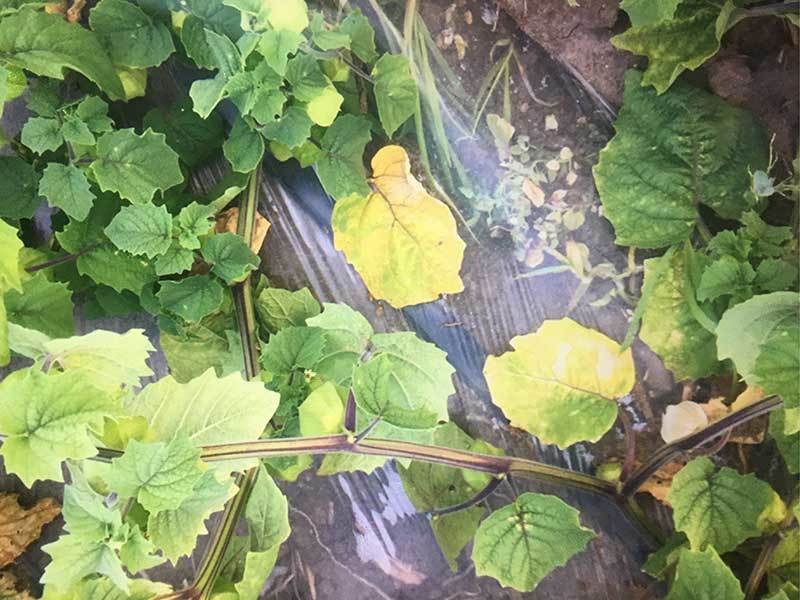Tomatillo Leaves Turning Yellow: Causes and Solutions
Introduction
Yellowing tomatillo leaves signaling potential problems in the soil, weather, or plant health. We will explore the reasons behind tomatillo yellow leaves and how to address them effectively.
Why Are My Tomatillo Leaves Turning Yellow?
Nutrient deficiencies
Nitrogen is an essential element in the production of chlorophyll. This pigment gives leaves their green color. It is crucial for the process of photosynthesis. A nitrogen deficiency can manifest as a loss of green in the leaves. This leads to a pale green or yellow color.
Potassium is responsible for several functions within the plant. For example, regulating water uptake and controlling the opening and closing of stomata. A deficiency in potassium can lead to tomatillo plant yellow leaves. It is often beginning at the tips and edges and spreading inward.
Without magnesium, the molecular structure of the pigment cannot be maintained. This results in a loss of green in the leaves. Magnesium deficiency results in the yellowing of older, lower leaves first.
Overwatering
One of the most common mistakes gardeners make is overwatering their tomatillos. Too much water can lead to yellowing leaves. Overwatering can suffocate the roots. This prevents them from absorbing nutrients properly.
Underwatering
Conversely, under-watered tomatillo plants suffer from a lack of necessary moisture to perform their metabolic processes efficiently. In this scenario, leaves may also turn yellow, become brittle, or even defoliate.
Common Pests
Aphids, flea beetles, and spider mites are common pests. Aside from visible pests, you can also find some signs of these creatures. For example, stippling (tiny, discolored dots) on the leaves, chew marks, or a sticky residue known as honeydew.
Common Diseases
Fungi and bacteria can cause diseases in tomatillo plants, resulting in yellowing foliage. Common tomatillo diseases can include diseases caused by bacterial or viral pathogens and fungal infections. For example, powdery mildew.
Indicators of a fungal problem may include a white powdery substance on the leaves. Bacterial infections may cause wilting, leaf spots, or cankers.
Identifying the Cause Through Observation
The Importance of Keen Observation
To diagnose the issue, take note of any recent changes in weather, watering habits, and soil type. Observation is the most powerful tool in your gardening arsenal. The more detail the better.
Visual Cues to Look For
Color Changes: Pay attention to the shade of yellow. Different hues can indicate different problems. A pale yellow may suggest a nutrient deficiency. While a more lemon yellow might be a response to overwatering.
Texture and Appearance: Feel the leaves for changes in texture. If the tomatillo yellow leaves are also wilting or drooping, this could point to root rot. This is due to too much moisture in the soil.
Presence of Pests or Signs of Disease: Look closely at the underside of the leaves and along the stem for any insects or fungal growth. The presence of spider mites, aphids, or whiteflies can cause yellow tomatillo leaves.

Solutions to Address Yellowing Tomatillo Leaves
Adjusting Nutrient Levels
Correct any nutrient deficiency by fertilizing the plants appropriately. For tomatillos, a balanced fertilizer with a higher nitrogen content will often be the best choice. Ensure you are feeding your plants at the correct stage of growth for maximum benefit.
Testing the soil is a simple yet effective way to understand and correct nutrient imbalances. It gives you a precise idea of what your soil needs. Overfertilization can also cause yellowing of the leaves as a symptom of nutrient burn.
Proper Watering Techniques
The key to watering tomatillos is balance. Regular, deep watering is essential, especially during fruit development. Allowing the soil to dry slightly between waterings. This prevents root rot and tomatillo turning yellow associated with overwatering.
Watering in the morning to allow excess moisture to evaporate during the day. Mulching around the base of the plants. This can also help retain soil moisture and prevent fluctuations.
Pest Management Strategies
Introducing beneficial insects can help control pest populations naturally. For example, ladybugs or lacewings. In severe cases, you may need to use organic pesticides. However, always start with the least invasive methods. Use pesticides only as a last resort.
Disease Prevention and Treatment
Preventing diseases is often about setting up good growing conditions and being vigilant about plant health. Ensure your tomatillos have adequate space between them. Good air circulation can reduce the spread of disease.
Keep the garden clean by removing fallen leaves or any plant debris that could harbor disease. Applying organic fungicides for fungal infections. Some certain biofungicides can also serve as effective treatments.
Additional Tips for Tomatillo Plant Care
Proper Pruning Techniques
When pruning tomatillos, be deliberate but gentle. Don't cut more than a third of the plant at a time. Be mindful of any developing fruits. Remove any crossing or crowded branches to improve airflow.
Mulching to Conserve Moisture and Deter Pests
Mulch can keep soil moisture levels consistent and act as a barrier. It discourages pests and prevents soil-borne diseases from splashing up onto the leaves. Organic mulches are a great option. They break down and add nutrients to the soil over time.
Providing Adequate Sunlight and Airflow
Tomatillos need full sun to develop their best flavor. Make sure they're getting at least 6-8 hours of direct sunlight per day. Additionally, good airflow prevents the buildup of humidity and stagnant air. Space your plants appropriately. Avoid planting in areas with frequent wind stagnation.
Regular Monitoring and Maintenance Routines
Make a schedule and stick to it. Regularly check your plants for any signs of trouble. Catching issues early makes them much easier to manage. Also, stay attentive to how changing weather and plant growth stages. These might require adjustments in watering and care.
Conclusion
Identifying the root cause of tomatillo leaves turning yellow is crucial. You should stay vigilant and address any yellowing of leaves promptly. This can ensure a bountiful harvest all the season.

